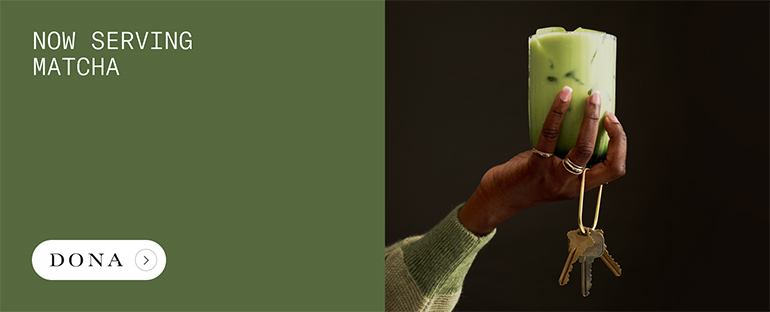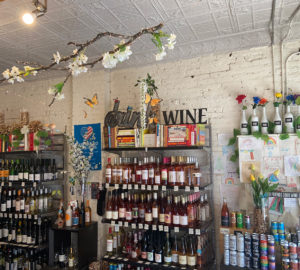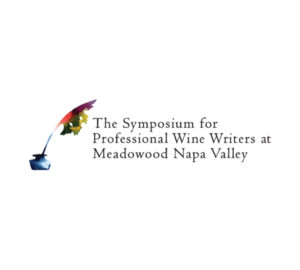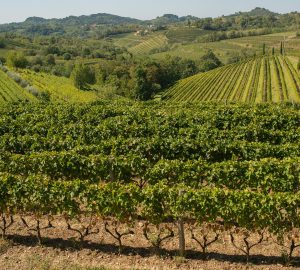In wine, as in many things, the tendency is to obsess over the new—the latest hip celebrity rosé; or the limited-availability Grower Champagne that’s just entered the market; or the entire category of “natural wine” in general, which is considered a modern movement, having first popped up in France in the 1980s as a reaction to industrialized wine.
But it’s also true that everything new has, at some point, already happened. That’s evident in the Republic of Georgia, where wine has been cultivated continuously longer than anyplace else in the world—8000 years, by some estimates—and currently a hotspot for the global natural wine movement. Having emerged from 70 years of socialism, the country is recognizing the uniqueness of its wine culture, most notably marked by the use of qvevri (pronounced: [kwevri]): underground clay vessels, often lined with beeswax, which offer a neutral way of fermenting wine without additives.


Georgia also has hundreds of indigenous grape varieties that don’t exist elsewhere; the whites tend to be fermented on the grape skins, producing a gorgeously amber hued (or “orange”) wine that offers the tannin and structure of a red wine, with the acidity of a typical white. White peach and fresh citrus are common flavors in the Georgian orange wines. Some winemakers have told me that skin contact on white wines offers a natural form of protection, which means they don’t have to add any sulfites to stabilize the wine—producing fresh, lively juice.

Having recently visited the Republic of Georgia, I was privileged to taste a wide range of natural and low-intervention wines. They are almost all available in very small quantities, and some are just coming into the U.S. market right now. To explore Georgian wines, you could look for some of my recommendations below, but it might be easier to just try whatever is available where you are. Gradually, we’ll see more and more of these producers Stateside. In some cities, there are known champions of Georgian wine, such as Dame in Portland; Bestia in Los Angeles; Camino, The Punchdown, and Farmstead Cheeses in Oakland; Brunette in Kingston, NY; or Freek’s Mill, Rouge Tomate, Oda House, and the Ten Bells in New York City.
The three most common white grape varieties of Georgia, generally speaking, are Mtsvane, Rkatsiteli, and Tsolikouri. Mtsvane is a bit more aromatic while Rkatsiteli offers acidic structure; Tsolikouri is sometimes made with less or no skin contact. In terms of reds, Georgia is known for Saperavi, a black-fruited, tannic and sometimes powerful red. These are all food wines, due to their acidity and tannin, and in Georgia they will be served alongside a feast of khachipuri, vegetables, meats, and cheeses. The wines are amazing versatile along an array of foods—especially grilled meats and vegetables, with smoke notes playing well alongside the tannins—so do consider eating something delicious while drinking these wines.
Iago’s Wine
The Chinuri grape is the shining star of Iago’s 2-hectare organic vineyard in the village of Chardahki, just west of Tbilisi, the Georgian capital. Some say that the grape’s name comes from the Georgian word “chinebuli,” meaning “excellent”. The grape is very high in acidity and often used for sparkling wine, and known for its herbal, floral aromatic profile. All of Iago’s Chinuri wine is fermented and aged in qvevri, some of which are several hundred years old, though he makes some non skin-contact wine in addition to the orange style. I recently drank a 2010 Iago’s Wine (a rare find), and it was lush, full of concentrated fruit with honeyed overtones—my point being, these wines can definitely age, although they drink wonderfully upon release.

Kati Ninidze
This is Kati Ninidze’s first vintage; her husband Zazu makes a wide range of wines under the label TK, which are very good. But her wines are just coming to the U.S. so they are new and extra-exciting; plus, she is one of the first commercial female winemakers in Georgia. Kati works with a unique variety called Ojoleshi Orbeluri, which she vinifies white in her “Naked Wine” release, adorned with a label depicting one woman, free and nude, and another, in a cage—feminist symbology, of course. This wine has a light salmon hue, with notes of peaches and citrus, while her rosé of the same grape (both 2016 vintage) is fresh, bright, fruity, with fresh strawberry notes.
Nikoloz Antadze
In the mid-Aughts, Niki Antadze re-purchased some of his family land, which had been confiscated during Soviet times but was once renowned for being amongst the best vineyards in Kakheti (Eastern Georgia). He now has 3 organically farmed hectares of Rkatsiteli and Mtsvane, and is producing some really wonderful wine from it. His 2016 Mtsvane is made with only 10 percent of the skins, making for a fresh and lively take on the style, with just a bit of tannin. Antadze’s ’16 Rkatsiteli is similarly fresh, notable for its clean minerality.
Mariam Iosebidze
In 2014, Mariam Iosebidze made her first vintage under her own label, with the delightful red grape Takhveri fermented in qvevri. The 2016 vintage has lively black fruits and medium tannins, with a soft touch of acidity. Keep an eye out for more wines from this one!

Kortavebis Marani
This 2-hectare organic vineyard in Kakheti (Eastern Georgia) makes Rkatsiteli and Mtsvane, as well as Saperavi. They also have a very unique bottling made from a field blend vineyard, where dozens of heritage varieties coexist—something that was much more common in centuries past, before people decided that varietal wines (meaning, only one grape is used) were the way to go. I tasted my way through the 2016 vintage, and all of these wines are extremely lively and beautiful—the Saperavi has a touch of residual sweetness, which is interesting and unusual—but the field blend, which is a light red, has an almost indescribable, ethereal beauty.
Pheasant’s Tears
Based in Khaketi, Eastern Georgia, with about 24 hectares total around the country, Pheasant’s Tears is certainly the most well-distributed artisanal Georgian wine label outside the Caucuses. Pheasant’s Tears was founded by an American, John Wurdeman, whose story is given full voice in Alice Feiring’s excellent Georgian wine travelogue, For The Love Of Wine. His skin contact Rkatsiteli is a long-time favorite and a good entry point for anybody just trying Georgian wine for the first time; their juicy and bright Saperavi, full of sapidity and intense black fruits, is one of my favorite examples of this classic Georgian variety. Additionally, Pheasant’s Tears produces a non-skin contact Tsolikouri, Mtsvane, and a wide range of limited-production wines from unusual and rare Georgian varieties. The company also owns a restaurant, a famous wine bar in Tiblisi, and operate a touring company for those interested in visiting the beautiful, delicious, wine-loving Republic of Georgia.
Rachel Signer is a Sprudge Wine contributor based in Paris, and the co-founder of Terre Magazine. Read more Rachel Signer on Sprudge Wine.
All photos by Rachel Signer.


































